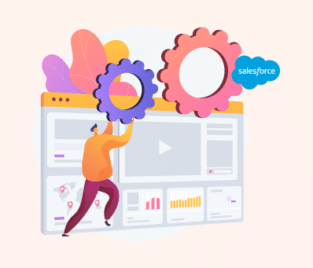Business Analytics Tools
Are you trying to figure out how to make data-driven decisions in your business? The best way you can is with business analytics tools. They give you insights into the business operations you want to study and let you make informed decisions at the end of the day.
Keep reading our article to learn more about how techniques and tools for business analytics can help you identify trends, business opportunities, and risks in your industry based on data.
Business Analysis Tools
There are many business analysis tools that you could use to collect and examine data. The one that you end up choosing must match the requirements of your study or you will be wasting good time.
Every business analysis tool is designed with a different purpose, so take a look at these 3 common tools below to see if they might fit your research purpose.
SWOT Analysis
The first tool on our list that is super popular and used in many different business areas is SWOT Analysis. The SWOT term is an acronym for Strengths, Weaknesses, Opportunities, and Threats.
Managers often use SWOT Analysis to take a look at the team or company’s internal strengths and weaknesses as well as the opportunities and threats that face the business.
Opportunities and threats are external factors, but all data collected from a SWOT Analysis are used to make business decisions.
PESTEL Analysis
With PESTEL Analysis, you can examine the external macro-environmental factors that affect your business. The acronym PESTEL stands for Political, Economic, Social, Technological, Environmental, and Legal.
Porter’s Five Forces
The last business analysis tool we would like to discuss in this article is Porter’s Five Forces. This tool is used to examine any competitive factors that exist in your specific industry.
Businesses find that Porter’s Five Forces is a well-rounded tool to find out about new companies entering the industry and the threats that they bring to your organization.
It can also be used to create bargaining strategies when dealing with suppliers and customers.
What do Business Analysts do?
Business analysts will employ the tools mentioned above and software to help the organization that they work for. With the assistance of these analytics solutions, business analysts can improve business processes across all departments, make decisions, and help teams meet their project goals.
Companies hire business analysts to make sure that the technology solutions that they provide to customers align with the needs of the company.
Let’s take a look at some of the tasks that a business analyst would have to perform on a regular workday.
Elicit Requirements for Projects
As business analysts have to understand the solution provided by a team, they are responsible for documenting the project requirements, the business need for the solution, and the objectives the business wants to achieve.
You will find that business analysts spend a lot of their time in meetings, talking to stakeholders, clients, managers, subject matter experts, and end users to gather requirements for the project.
Business analysts collect information mostly by engaging in interviews or sending out surveys.
Analyzing Data
Next up, after collecting data, business analysts have to analyze the data. They perform this task to identify trends and patterns that can arise in the data, which can shine a light on areas in business that can be streamlined. Analyzing data is also used to create reports that can be sent to managers to aid in decision-making.
Process Modeling
Another common task that business analysts get assigned is modeling processes. This activity will include creating flowcharts to show colleagues, partners, and important stakeholders current methods and new ones that will be adopted to optimize business operations.
Process modeling is an essential task to help identify traffic jams in the workplace so that workflows can be revised and optimized.
Business Analytics Software
A lot of these tasks performed by business analysts can be time-consuming and error-prone if conducted in a manual manner.
Since collected data needs to be accurate as it will be used to make informed business decisions, it is absolutely crucial to get business analytics software to collect, analyze, and display data. The appealing part about getting the best programs for business analytics is that when you invest in them, they can be used across all departments in your organization, no matter which industry you belong to.
When you look for a market-leading software that focuses on business analytics, make sure that it contains these basic features and functionalities:
Titan for Business Analysis Solutions
Titan is the market-leading no-code platform that you want for business analysis. Our powerful platform integrates directly with your Salesforce database to read and write data to your web projects in real-time. With Titan, you can create custom documents, web forms, and apps, add eSignatures to projects, and build surveys fast!
Our platform is extremely flexible and lets you build scalable organizational processes that connect your teams, customers, and partners.
If you want to reduce development costs, improve your user experience, and increase your revenue streams, we suggest you look no further than Titan.
The Titan platform has a solution for any use case! Take a look at our apps in more detail.
If you would like to know more about a specific Titan app or need a full feature breakdown for automation, please feel free to reach out to us. We are #1 on Salesforce AppExchange and can be found on all the leading social media platforms.
Frequently Asked Questions
What is a business analytics tool?
A business analytics tool is a feature found in software apps that can help your business work with data. Not all business analytics tools are of the same quality, but the smart ones will assist you with collecting, analyzing, and displaying your data.
Professionals in organizations rely on business analytics tools to make data-driven decisions as they provide insights about business processes, their customers, and the industry in which they operate.
What are business analyst tools?
Business analysts have a range of tools to help them gather, analyze, and display data for a company. Their research and the data that they work with will be based on the processes or projects that they have been assigned to work on.
Microsoft Excel or Google Sheets are examples of reliable business analyst tools as they can be used to analyze, model, and report on data.
What are the 4 types of business analytics?
There are many techniques and methods used in the business analysis field to work with data and make well-informed decisions. Still, according to online research, the 4 main types of business analytics are descriptive, diagnostic, prescriptive, and predictive.
Flawless Digital Experiences from Titan
Thank you for reading our article on business analytics tools. We hope we got to save you some research time by providing you insight into common business analysis tools in the industry, the role that business analysts play in the workforce, some tips for choosing a good business analytics software, and finishing up with our suggestion of the best platform that can help you with business analysis tasks.
If you have a particular question in mind, please reach out to us. We would love to help you solve your unique business needs. We are trusted in dozens of industries and have a whole range of plug-and-play features to extend your digital experiences.
Contact us through one of our social media channels below.
We hope to see you soon!

Disclaimer: The comparisons listed in this article are based on information provided by the companies online and online reviews from users. If you found a mistake, please contact us.




